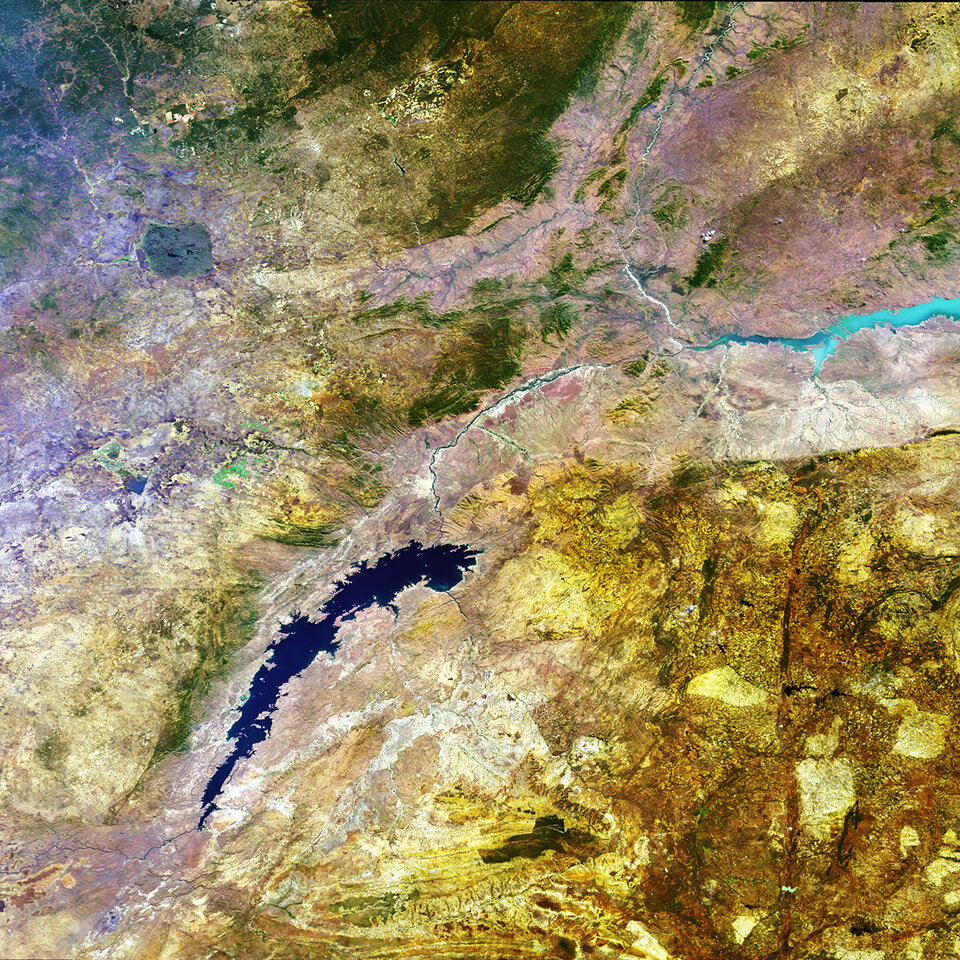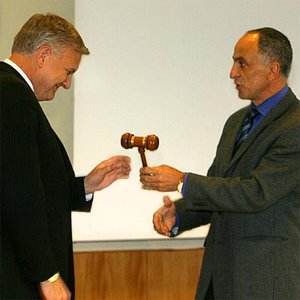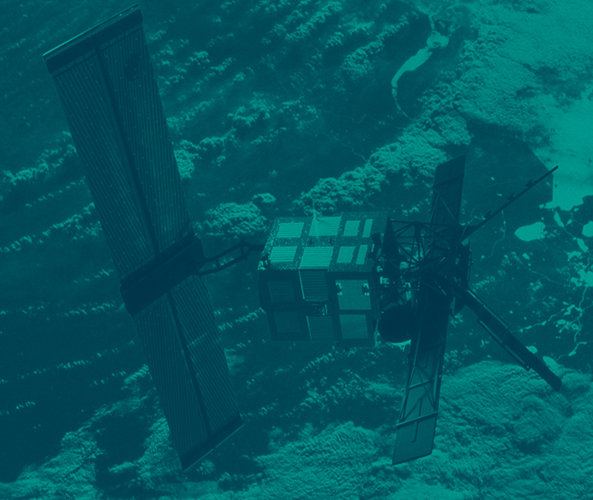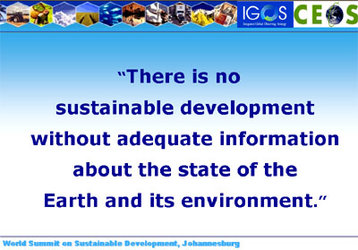TIGER participants meet in space-based hunt for African water
An ambitious initiative to utilise ESA satellite data to improve availability and management of African water resources took a further step forward on a hill slope overlooking Rome this week.
ESRIN, the European Centre for Earth Observation in Frascati near Rome, was the setting for the two-day TIGER Workshop which is being followed by three days of Earth Observation technology training sessions.
ESA's Director of Earth Observation Programmes and Head of ESRIN Volker Liebig began the Workshop on Monday 3 October by welcoming the 95 participants coming from 31 countries: "We consider the TIGER Initiative to be a very important application of our space programmes and Earth Observation satellite data. There are now 50 projects in progress, 70% of which are being headed by African organisations. A dedicated TIGER Office will also be opened in Africa."

TIGER aims at applying Earth Observation to supply water-related geo-information in support of the practice integrated water resource management for sustainable development. Since its initiation two years ago more than 200 African organisations – including water and basin authorities, technical centres, universities and regional organisations - have become involved in different projects around the continent. The hope is to develop a technical, human and institutional capacity to bridge Africa's water information gap using satellite data.
The projects span the African continent as well as the various stages of the water cycle. Presentations at the Workshop included the use of satellite data to chart soil moisture across Southern Africa, monitoring flood plains and humid zones in the Sahel region of Senegal, combining radar and optical Earth Observation data to monitor the environmental state of the northwest coast of Madagascar and modelling the water balance of semi-arid rock watersheds using both satellite imagery and in-situ data.

Providing perspective on the needs of end-users, Mahmoud Hassain, Acting Director of the National Water Resources Plan Project for Egypt, gave a presentation on the changing approach to water resources management in his country. Egypt has had water plans in place for the last three decades, commencing from the approach of supply management. The current National Water Resources Plan (NWRP) integrates the management of water supply and demand, aiming to guarantee the quantity and quality of water for socio-economic development to 2017.
This change in approach has been driven by growing demand due to population increase and rising living standards. Available water per head of Egyptian population has halved since 1959, and is projected to further decrease by a third by 2025.

Additional water sources will be needed to meet the NWRP's aim of increasing agricultural land by 35% and create desert living space for 20% of the population, as well as doubling people's access to safe sanitation from its current 30% level. Satellite data has a role to play in both locating and managing water resources, particularly in terms of subsurface desert aquifers but also monitoring irrigation services and the extension of agricultural land.
Hassain gave examples of satellite images being used to chart the morphology of the artificial Lake Nasser, follow the 2004 flood of the Toshky spillway from the Lake into the Toshky Depression in the Western Desert, and track the westerly extension of agricultural land via water from the Nile in the West Delta Project.

Dr. Stephen Donkor of the United Nations Economic Commission for Africa (UNEC-A) is Chairman of the TIGER Steering Committee. He pronounced himself happy that the original objective behind the TIGER Initiative, expressed at the Johannesburg World Summit for Sustainable Development (WSSD) in 2002, is being realised.
"Everything we are doing here comes out of a statement made by global space agencies during Johannesburg that as part of their commitment to sustainable development they would provide tools which can be used to manage Africa's water resources better," Dr. Donkor said. "Three years on we have got organised and are getting concrete projects started on the ground.

"Now the question is whether the projects reflect African needs. Right now most of the projects are scientifically oriented, and the products of these projects have to be translated into usable information for practitioners in the field. I think we are getting there, judging by some of the questions asked today, especially on finding and managing groundwater, without which Africa will not be able to meet the Millennium Development Goals set by the United Nations."
Dr. Donkor also added that UNEC-A is hosting an Africa Water Information Clearing House, intended to be a 'one-stop shop' for all available data on African water available to everyone who needs it. Results from individual TIGER projects will be added to this Clearing House, on the basis that increasing their visibility and data accessibility will increase their overall effectiveness. It should also be a means of attracting funding from national and international donors to support the continuation of TIGER project activities.

Jean-Marc Chounard of the Canadian Space Agency (CSA) reaffirmed his organisation's commitment to TIGER, and said that the seven projects being supported by CSA would all be receiving free Radarsat-1 data, including a high-resolution radar mosaic of the African continent. He also extended the offer to ESA projects requiring supplementary data.
Information was also given on a new class of project called TIGER-Innovators which seeks proposals for African teams to develop novel water-related services. Several proposals have been received so far, with up to five projects due to be selected at the end of this year.
Following the conclusion of the two-day Workshop, the rest of the week was taken up with training sessions in specialised software applications for processing data known as the Basic ERS & Envisat AATSR and MERIS (BEAM) toolbox. Participants were also supplied with Training Tool Kit software and dedicated TIGERWorks software for beginner training.















 Germany
Germany
 Austria
Austria
 Belgium
Belgium
 Denmark
Denmark
 Spain
Spain
 Estonia
Estonia
 Finland
Finland
 France
France
 Greece
Greece
 Hungary
Hungary
 Ireland
Ireland
 Italy
Italy
 Luxembourg
Luxembourg
 Norway
Norway
 The Netherlands
The Netherlands
 Poland
Poland
 Portugal
Portugal
 Czechia
Czechia
 Romania
Romania
 United Kingdom
United Kingdom
 Slovenia
Slovenia
 Sweden
Sweden
 Switzerland
Switzerland

































